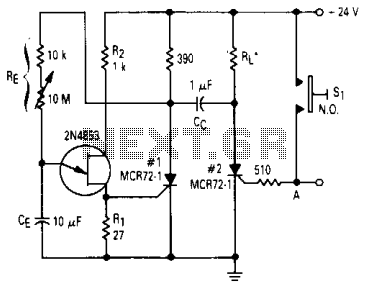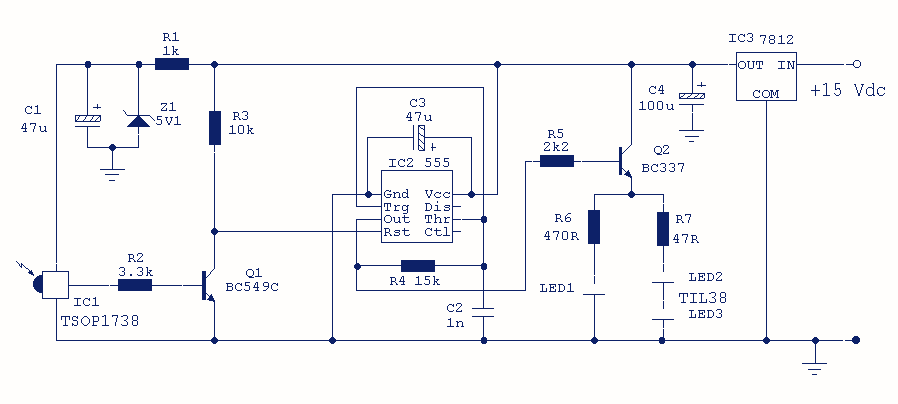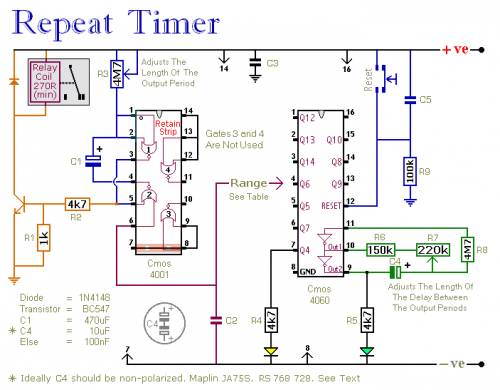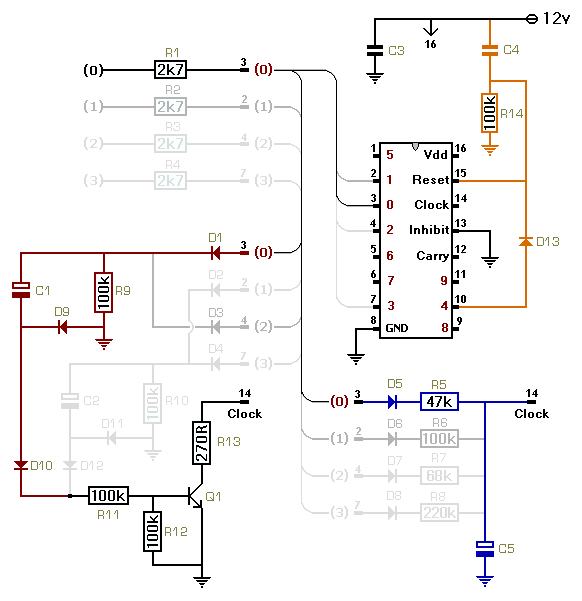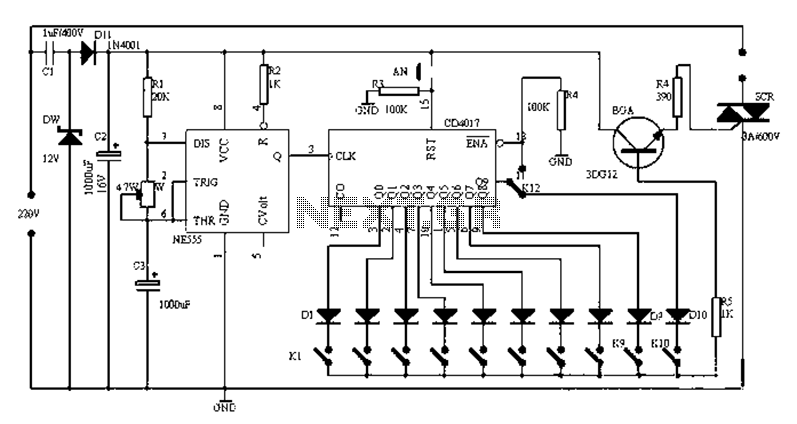
555 timer IC as A-stable Multivibrator
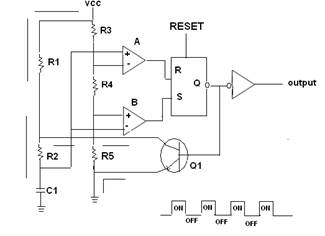
A 555 timer IC is utilized as an astable multivibrator, as illustrated in the accompanying figure (A). The threshold input is connected to the trigger input (Pin 2). The resistor R1, resistor R2, and capacitor C1 form the timing network that sets the frequency of the oscillator.
The astable multivibrator configuration of the 555 timer IC operates continuously in a square wave output mode, making it suitable for generating clock pulses or timing applications. In this setup, the timer does not have a stable state; it oscillates between high and low states by charging and discharging the timing capacitor (C1) through the resistors (R1 and R2).
The circuit operates as follows: When power is applied, the capacitor C1 begins to charge through resistors R1 and R2. The voltage across C1 rises until it reaches the threshold voltage (2/3 Vcc), at which point the output at Pin 3 switches from high to low. This transition causes C1 to discharge through R2 until the voltage drops to the trigger level (1/3 Vcc), at which point the output switches back to high, and the cycle repeats.
The frequency of oscillation (f) and the duty cycle (D) of the output waveform can be calculated using the following formulas:
1. Frequency (f) = 1.44 / ((R1 + 2R2) * C1)
2. Duty Cycle (D) = (R2 / (R1 + 2R2)) * 100%
These equations indicate that by adjusting the values of R1, R2, and C1, the frequency and duty cycle of the output waveform can be precisely controlled, allowing for versatile applications in timers, pulse-width modulation, and tone generation circuits.
In practical applications, the 555 timer IC is widely used in various electronic devices, including LED flashers, tone generators, and frequency modulators, due to its reliability and ease of use. Proper selection of the timing components is crucial for achieving the desired performance in specific applications.A 555 timer IC is used a a-stable multivibrator as shown in the given figure (A). The threshold input is now connected to the trigger input (Pin 2), the resister R1, R2 and capacitor C1 for timing network which set the frequency of the oscillator.. 🔗 External reference
The astable multivibrator configuration of the 555 timer IC operates continuously in a square wave output mode, making it suitable for generating clock pulses or timing applications. In this setup, the timer does not have a stable state; it oscillates between high and low states by charging and discharging the timing capacitor (C1) through the resistors (R1 and R2).
The circuit operates as follows: When power is applied, the capacitor C1 begins to charge through resistors R1 and R2. The voltage across C1 rises until it reaches the threshold voltage (2/3 Vcc), at which point the output at Pin 3 switches from high to low. This transition causes C1 to discharge through R2 until the voltage drops to the trigger level (1/3 Vcc), at which point the output switches back to high, and the cycle repeats.
The frequency of oscillation (f) and the duty cycle (D) of the output waveform can be calculated using the following formulas:
1. Frequency (f) = 1.44 / ((R1 + 2R2) * C1)
2. Duty Cycle (D) = (R2 / (R1 + 2R2)) * 100%
These equations indicate that by adjusting the values of R1, R2, and C1, the frequency and duty cycle of the output waveform can be precisely controlled, allowing for versatile applications in timers, pulse-width modulation, and tone generation circuits.
In practical applications, the 555 timer IC is widely used in various electronic devices, including LED flashers, tone generators, and frequency modulators, due to its reliability and ease of use. Proper selection of the timing components is crucial for achieving the desired performance in specific applications.A 555 timer IC is used a a-stable multivibrator as shown in the given figure (A). The threshold input is now connected to the trigger input (Pin 2), the resister R1, R2 and capacitor C1 for timing network which set the frequency of the oscillator.. 🔗 External reference
Warning: include(partials/cookie-banner.php): Failed to open stream: Permission denied in /var/www/html/nextgr/view-circuit.php on line 713
Warning: include(): Failed opening 'partials/cookie-banner.php' for inclusion (include_path='.:/usr/share/php') in /var/www/html/nextgr/view-circuit.php on line 713

